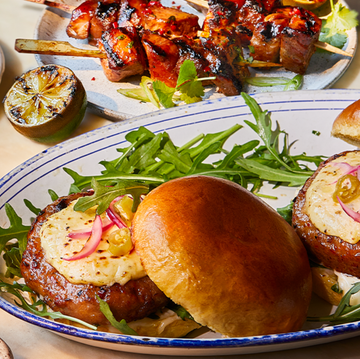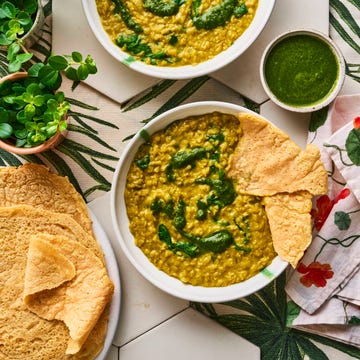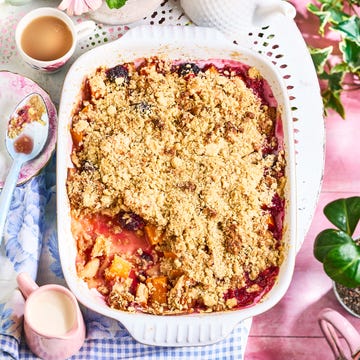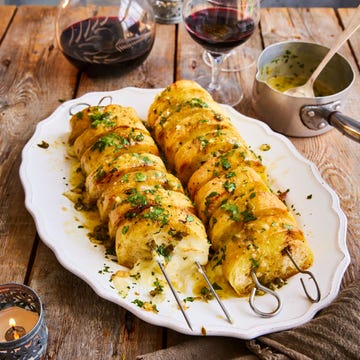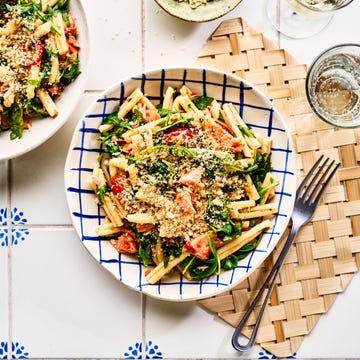How many times a week do you reckon you turn to Google to help you solve all of life's problems? After all, it's not just a great place to remember the lyrics to your favourite song, or finding out how much Brad Pitt is worth. The search engine is the go-to place for all our 'how to' questions, from the perfect recipe, to household advice, and everything in between.
So we took a deep dive into Google users' searching habits, to find out exactly what food related questions they were asking the search engine - and it was eclectic!
From how to boil an egg, to how to cook the perfect turkey, our expert cookery team gave their advice to getting it right every time!
How to boil an egg
Is it surprising that this is the highest search? A simple thing to do, but get the timings wrong and you can be left with an egg yolk runnier or harder than you anticipated.
To get the perfect boiled egg, you want to use a small pan of simmering water (enough to cover the eggs), lowering them into the water using a spoon. For soft boiled eggs cook for 3 ½min for medium or 4min for large and then serve immediately.
If you want hard boiled eggs, cook for 8-10min, depending on the size. Once cooked, drain and cool quickly under cold running water to stop a black rim forming around the yolk. When ready to serve, crack the shell and peel.
How to cook asparagus
Asparagus is a versatile ingredient, and adds a delicate flavour to a variety of dishes. But to cook it properly we recommend cutting the spears about two inches from the stalk end, before putting them into a large pan of salted water that will allow them to sit in a single layer. Cook for about 5-8mins until tender.
How to cook steak
Steak isn’t cheap, so ensuring it’s cooked perfectly is the key to a good meal. Remove your steak from the fridge about half an hour before cooking as it’s best cooked at room temperature. Pat it dry with kitchen paper, and then oil the meat rather than the pan.
For medium-rare to medium, cook for roughly two to three minutes per side, while for well done it’s about five minutes per side, turning the heat down once the steak gets to medium rare. Always rest the steak for a couple of minutes before serving to allow the juices to reabsorb.
How to cook roast beef
Remove your beef joint from the fridge an hour before roasting, patting the joint with kitchen paper to dry, and ensuring it's well seasoned.
Before going into the oven, we recommend browning small joints in a frying pan to give it good caramelisation without over-cooking it. If you’ve got a larger joint, blast it in the oven on a very hot temperature for 15 minutes before lowering.
Unfortunately, there’s no straightforward method for cooking, but as a general rule, weigh your joint, and following timings depending on the joint you have. Check the meat often, at least 30 minutes before the expected cooking time is up and invest in a digital thermometer. For medium-rare the internal temperature of the beef should be 54-57°C.
How to cook pasta
If you want to cook pasta like a proper Italian, you should boil your fresh pasta in salted water for no longer than 5min. If you’re using dried pasta, just follow the pack instructions. It’s important to always add a generous amount of salt to your boiling water, no less than 1.5 tablespoon of salt to every 500g pasta to help with the flavour.
How to cut a mango
Thanks to the hard core, mangos are actually quite tricky to cut. We do it by cutting lengthways down the mango, either side of the flat stone, as close to it as possible. Score the flesh of each piece with a criss-cross pattern, before pushing the skin upwards to expose the flesh.
How to cook rice
Add long grain rice to a pan with a pinch of salt and twice the volume of water. Bring to the boil, cover the pan and reduce the heat to low. Cook without uncovering the pan for around 15 minutes to keep in the steam. The rice is ready when it’s just tender and steam holes appear on the surface.
Once the rice is cooked, fluff up the grains gently by tossing with a fork, this keeps grains from sticking together. Remove from the heat and serve.
How to cook a turkey
Remove the turkey from the fridge an hour before you stuff it to let it come to room temperature. Once stuffed, spread softened butter all over the breast, legs and wings, layering bacon rashers over the entire bread of the bird.
Cooking times are based on weight, but make sure to weight the turkey once it’s stuffed, calculating 30-35 minutes per kg. Line a roasting tin with two sheets of foil to cover the turkey, and cook the turkey in oven at 190°C (170°C fan) mark 5, removing the foil for the last 45min of cooking.
To check the turkey is cooked, insert a fork into the thicket part of the thigh and check juices run clear.
How to cook red cabbage
Red cabbage is best braised not boiled to stop the colour running. Heat a tablespoon of oil in a large pan, and add one large shredded red cabbage and cook for a minute or two on medium heat. Add 300ml (1/2pint) vegetable stock and a pinch each of salt, pepper and sugar. Bring to the boil, then reduce heat, cover and simmer for about 45 minutes, removing the lid for the final 10-15 minutes of cooking to allow the juices to evaporate.
Cookery Editor Emma Franklin suggests adding all sorts of flavour twists to this, for example softened onion at the beginning, or thyme or rosemary to the cooking liquid. You can even replace the stock with wine or orange juice, spice it up with juniper, allspice or star anise as red cabbage takes bold flavours really well.

Vicky is our Food & Drink Director, where she oversees strategy and content across all of Hearst's brands, from recipe development to fun video franchises and everything in between.
With almost a decade's experience, Vicky was previously Editor of Delish UK, and Digital Food Editor of Good Housekeeping and she lives and breathes food content creation.
Outside of work, Vicky loves learning about wine, eating her way around the world, and hanging out with her dog Pickle.
An experienced and highly skilled team of food writers, stylists and digital content producers, the Good Housekeeping Cookery Team is a close-knit squad of food obsessives. Cookery Editor Emma Franklin is our resident chilli obsessive and barbecue expert, who spends an inordinate amount of time on holidays poking round the local supermarkets seeking out new and exciting foods. Senior Cookery Writer Alice Shields is a former pastry chef and baking fanatic who loves making bread and would have peanut butter with everything if she could. Her favourite carb is pasta, and our vibrant green spaghetti is her weeknight go-to. Lover of all things savoury, Senior Cookery Writer Grace Evans can be found eating crispy corn and nocellara olives at every opportunity, and will take the cheeseboard over dessert any time (though she cannot resist a slice of tres leches cake). With a wealth of professional kitchen know-how, culinary training and years of experience between them, they are all dedicated to ensuring every Good Housekeeping recipe is the best it can be, so you can trust they’ll work (and if they don’t – we’ll have the answer for why*) every time (*90% of the time the answer is: “buy an separate oven thermometer”!).











